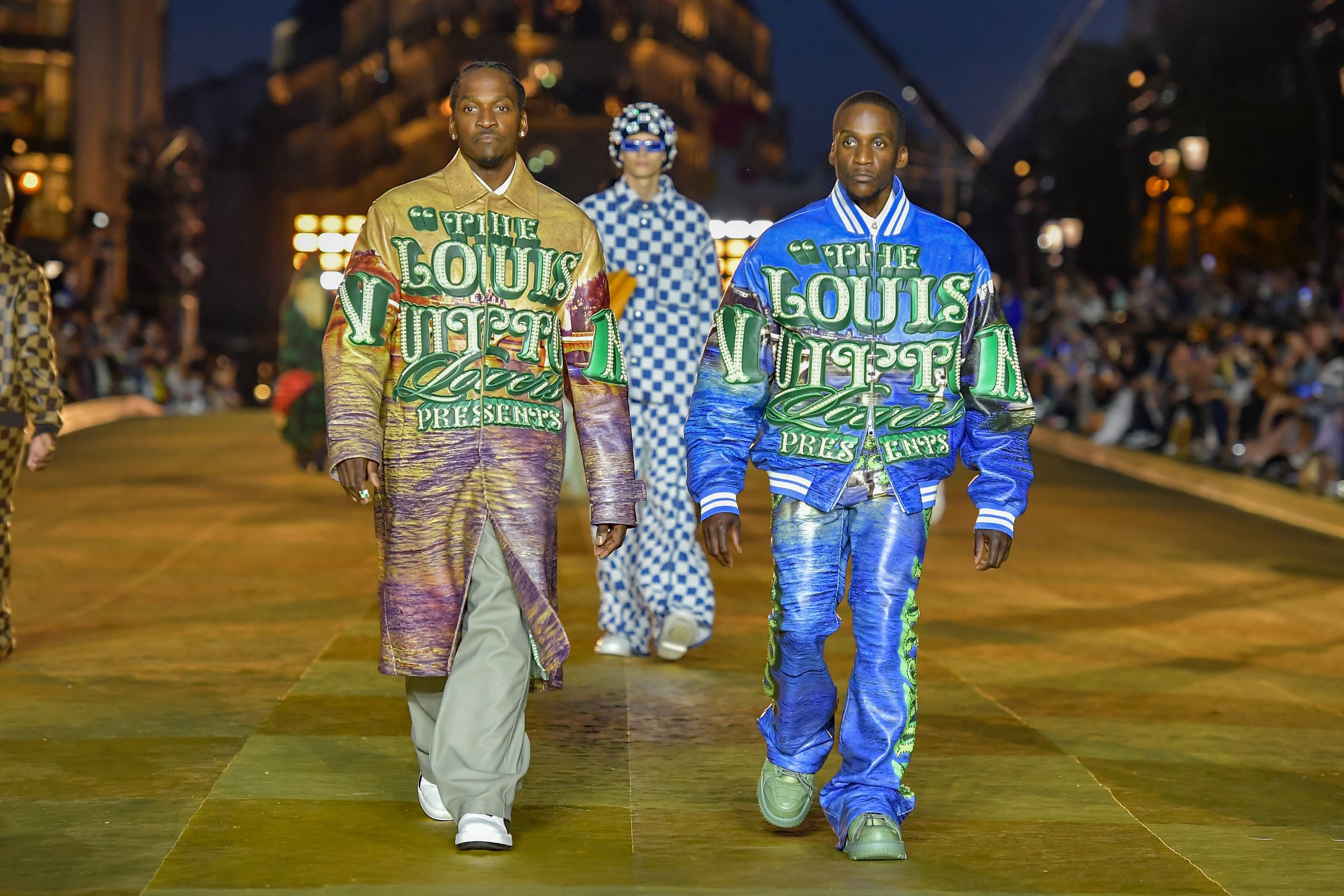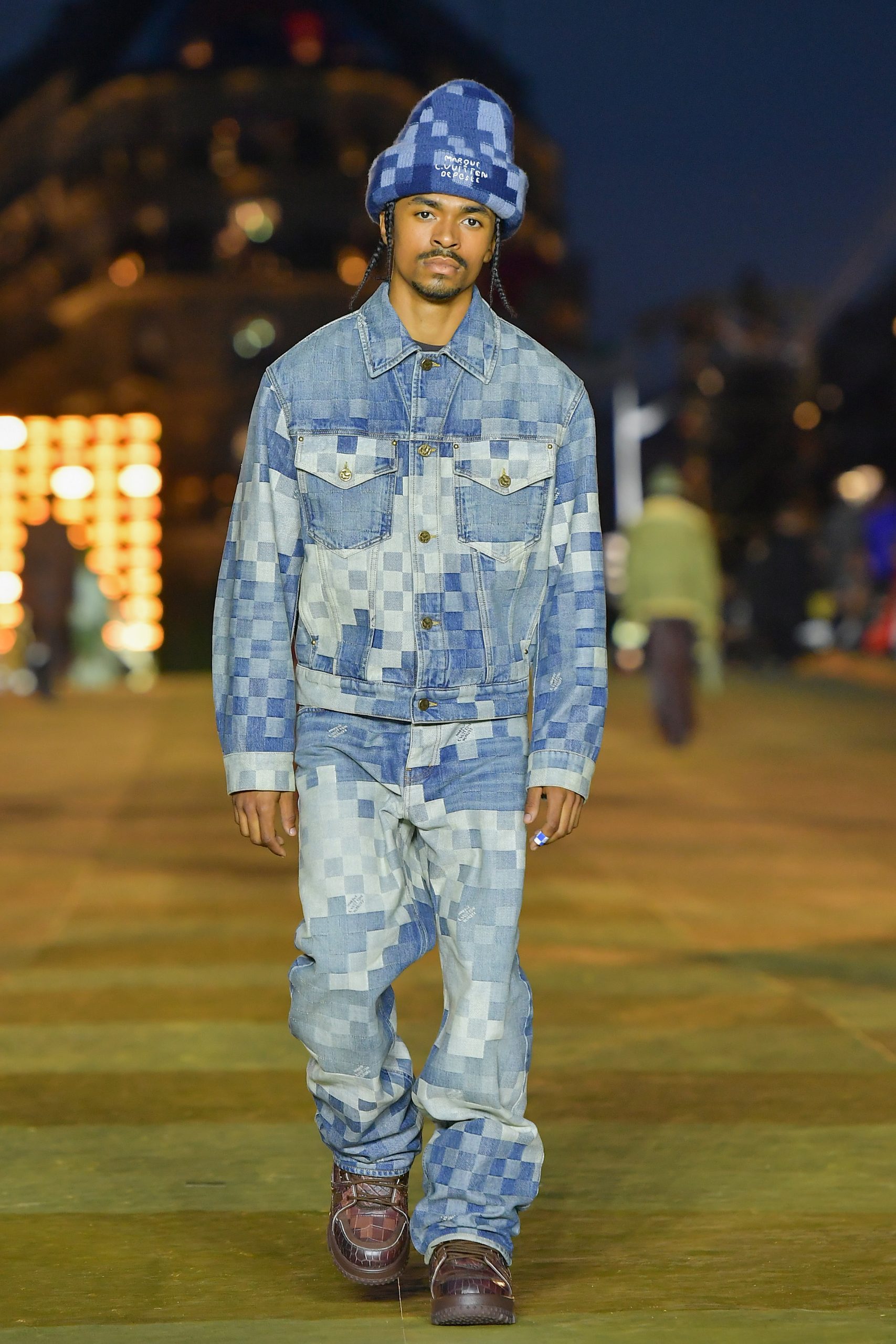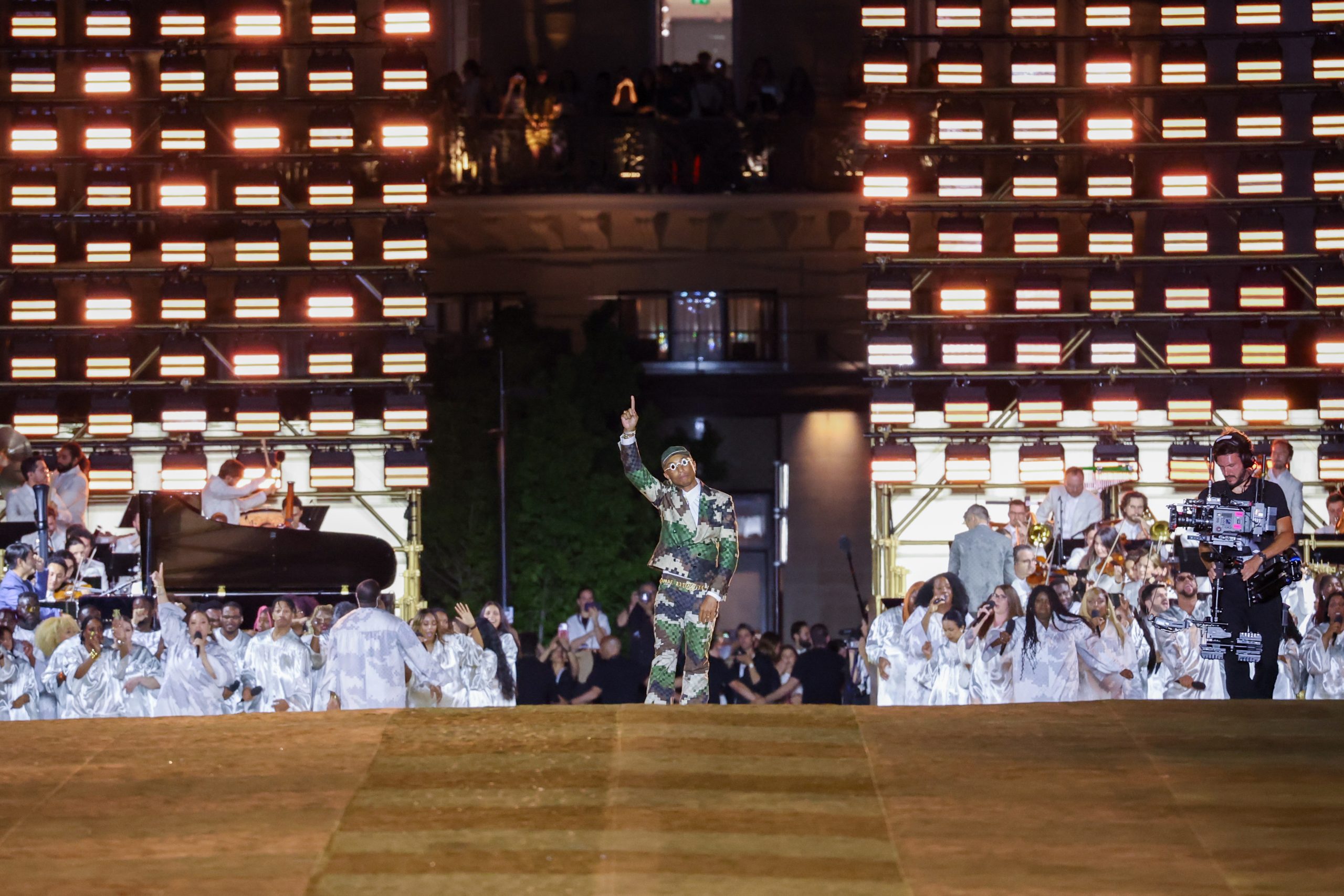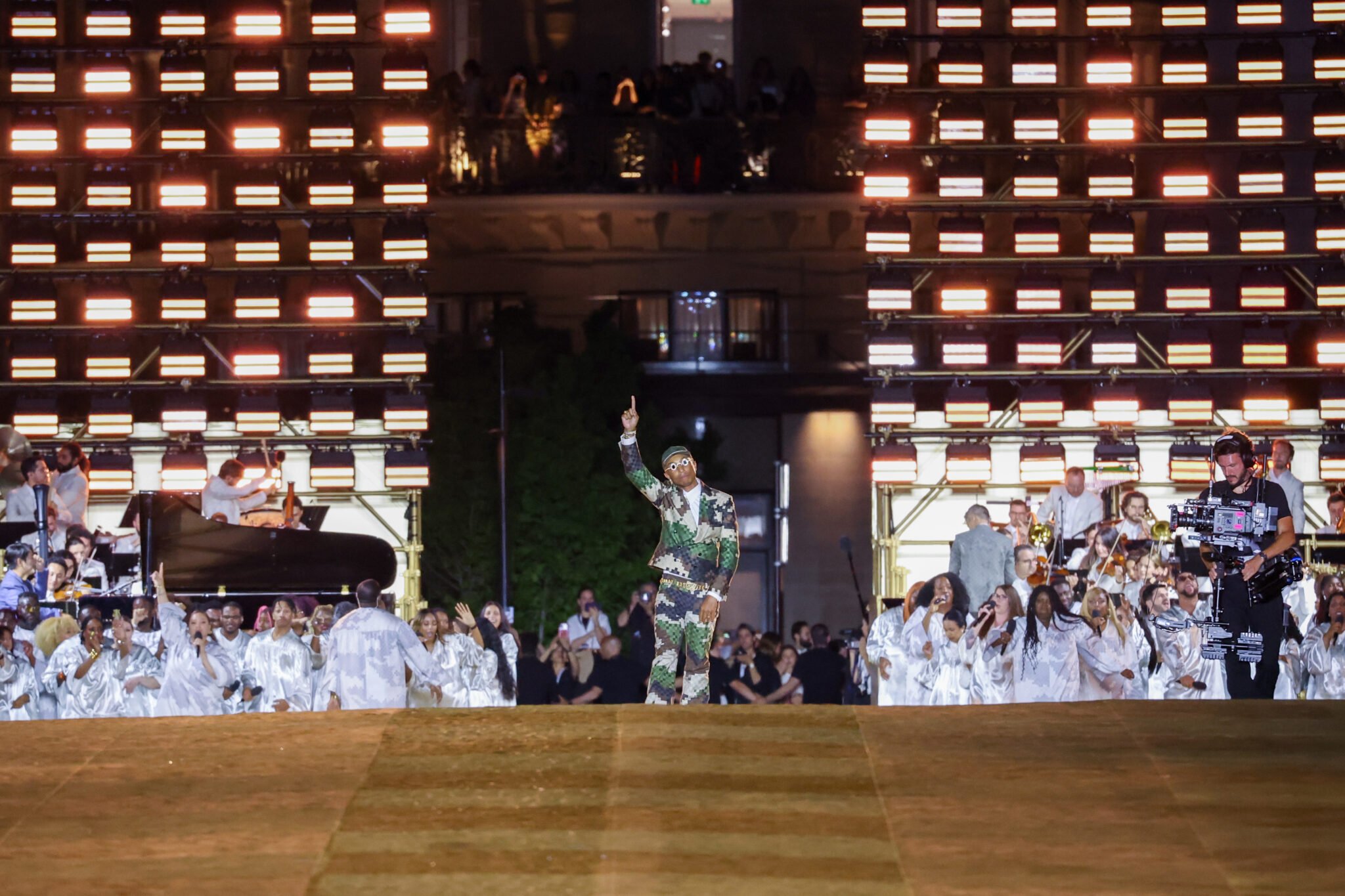This past February, the heritage French fashion house Louis Vuitton announced its decision to appoint the renowned producer and rapper Pharrell Williams as its newest creative director for its menswear offering. The post had been vacant since the death of the much-beloved designer and Off-White founder Virgil Abloh in November 2021, and was the subject of near-constant speculation.
However, when Williams’ appointment was announced, many were surprised, and it quickly became the subject of fierce online debate. There were those who admonished the choice, claiming that the role should have been filled by a young, up-and-coming designer with more experience in the fashion sphere. Others expressed their excitement, citing not only Williams’ innovative personal style, but also his previous creative experience as a collaborator with several other fashion brands including Adidas, Chanel, Moncler, Uniqlo, and even Louis Vuitton in 2008.

Following the announcement, Williams acknowledged the backlash that his appointment had garnered in a statement saying, “Kings rule in positions, right? I’m not that. What I am is a pupil, and I accepted it, this appointment, by saying, you know, I’m going to continue to be me. I’m going to continue to learn and with every collection, you’re going to see me sharing my learnings with the world.”
Such debates and discussions finally came to a head when Williams presented his debut menswear collection for Louis Vuitton on June 20th during Paris Men’s Fashion Week for the Spring/Summer 2024 season. Held on the historic Pont Neuf bridge, which had been coated in gold and illuminated by panels of stadium-style lights for the occasion, the show began making headlines even before the first looks hit the runway. With a guest list featuring the likes of Beyoncé, Jay-Z, Zendaya, Kim Kardashian, A$AP Rocky, Rihanna, and many more, the event quickly set social media alight and became one of the most star-studded spectacles in recent history.

Despite the myriad of celebrity heavy-hitters lining the front row, the collection itself easily stood on its own. Comprised of 73 looks in total, it was undoubtedly imbued with Williams’ unique and effortlessly cool personal style. This could be seen on several pieces, including Impressionist painting-printed leather coats, in both short and long variations, with the text “The Louis Vuitton Lovers Presents,” emblazoned across the front in a muted green font similar to that used on American paper currency. Likewise, there were numerous instances of re-imagined suiting, with pearl-encrusted oversized trousers, pleated knee-length skirts, and cropped tweed blazers.

The collection also saw Williams transforming long-established Louis Vuitton house codes for the modern era. Perhaps the most notable of these was the “Damier” print, which is, traditionally, the light and dark brown check pattern that typically adorns many of the label’s leather goods.
For his inaugural show, Williams made the Damier print the focal point and even joined forces with the American pixel artist known as E.T. to create an updated, pixelated version of it. This digitized iteration of the historic motif appeared on numerous garments, accessories, and handbags in a slew of different colors and textiles.

For instance, two denim sets emerged featuring the pixelated Damier check in alternating shades of blue. There were also various suits and separates that showcased a particular version of the print akin to camouflage, with green, brown, grey, and dark blue hues, which Williams playfully dubbed “Damoflage.” Perhaps the most intriguing of these pieces was a gabardine trench, which saw the Damier print arranged in such a way that it mimicked a pixelated image of the Seine and the Notre Dame cathedral.

What is particularly intriguing about Williams’ transformation of the Damier print is his decision to make it the anchor of his collection. Ordinarily, when consumers think of the canon of Louis Vuitton house codes, the first one that typically comes to mind is the ubiquitous “LV” and quatrefoil logo pattern, called the “Damier Ebène.” Although Williams did use this motif a handful of times throughout the show, its appearances were sparse and nowhere near as frequent as those of the Damier checkerboard print.
The fact that Williams chose to highlight the Damier pattern over the Damier Ebène demonstrates his clear intention to carve out a distinct place for himself in French house’s history. And, considering the longstanding and established Louis Vuitton brand identity, this is no mean feat. However, by putting a Louis Vuitton house code that is not the principal in terms of brand association at the forefront of his first show, Williams not only demonstrated his willingness to dive deeper into the label’s history, but also prove his talent and creativity as a fashion designer.
Of course, Louis Vuitton is one of several luxury labels revered primarily for their iconic leather goods. Although the clothing of Williams’ first collection was unique and statement-making on its own, the bags and shoes that accompanied each look demonstrated that the new creative director also recognizes the importance of putting his own stamp on these products.
The models strode down the runway in a variety of on-trend shoes including chunky Mary-Janes, bedazzled loafers, and oversized lug-sole boots. Many also carried calf leather monogram Speedy bags in bold primary colors, which Williams stated were inspired by the counterfeit versions sold on New York City’s infamous Canal Street. His pixelated Damier print appeared on several bags as well, notably an oversized Alba bag. But, the true standouts were undeniably the metallic monogram Miror bags, which he revived after Marc Jacobs previously introduced them during his tenure as the label’s creative director in the mid-2000s.
Considering the collection alone, Williams’ first outing with Louis Vuitton was, safely, a success. He effortlessly demonstrated his ability to adapt his signature cool, clean, and distinct aesthetic to the brand’s existing identity, while still presenting pieces that were clearly innovative.
However, if one were to also consider social media’s review of the collection, then it was a smash hit. Simply put, the show was record-breaking, as it garnered over one billion views from Louis Vuitton’s own platforms, as well as from various press accounts. It also generated a significant amount of online discussion, with 42,000 original posts mentioning the collection and over 1.2 million re-tweets, and counting. On YouTube, the show’s video has, so far, gained 15 million views, while Louis Vuitton’s account crossed the three-million-subscriber milestone, making it the most followed luxury brand on the platform.
Although the success of Williams’ debut should no doubt be applauded, questions about his future at the brand and his coming collections still linger. Currently, the “quiet luxury” movement is on the rise in the fashion industry, and it would appear as though consumers are increasingly seeking subtlety and minimalism in not only their clothing choices but every aspect of their life.
From an aesthetic perspective, people seem to be straying from vibrant hues, bold patterns, and out-of-the-box silhouettes, in favor of more timeless styles. Customers have also made it clear that they are now less inclined to shop according to which labels employ “celebrity” designers. Rather, with the recent departures of several high-profile designers from luxury labels, including Daniel Lee from Bottega Veneta, Alessandro Michele from Gucci, and Jeremy Scott from Moschino, it is evident that consumers are no longer drawn to brands for the star power that their creative directors may pack.
Despite the fact that Pharrell’s first collection was not the most visually ostentatious by any means, it’s safe to say that it doesn’t exactly play to the quiet luxury trend. Likewise, Williams himself is a major celebrity occupying the role of creative director. Therefore, while he should take the time to relish in the success of his debut at Louis Vuitton, he must now look to the future. Going forward, his focus should not only be on continuing this positive trajectory but also keeping a pulse on current trends and proving that his vision of Louis Vuitton has staying power beyond relying on his existing celebrity status. However, if his debut is anything to go by, his creativity, pension for innovation, and clear knack for modernizing the brand’s house codes will pay him dividends going forward.















